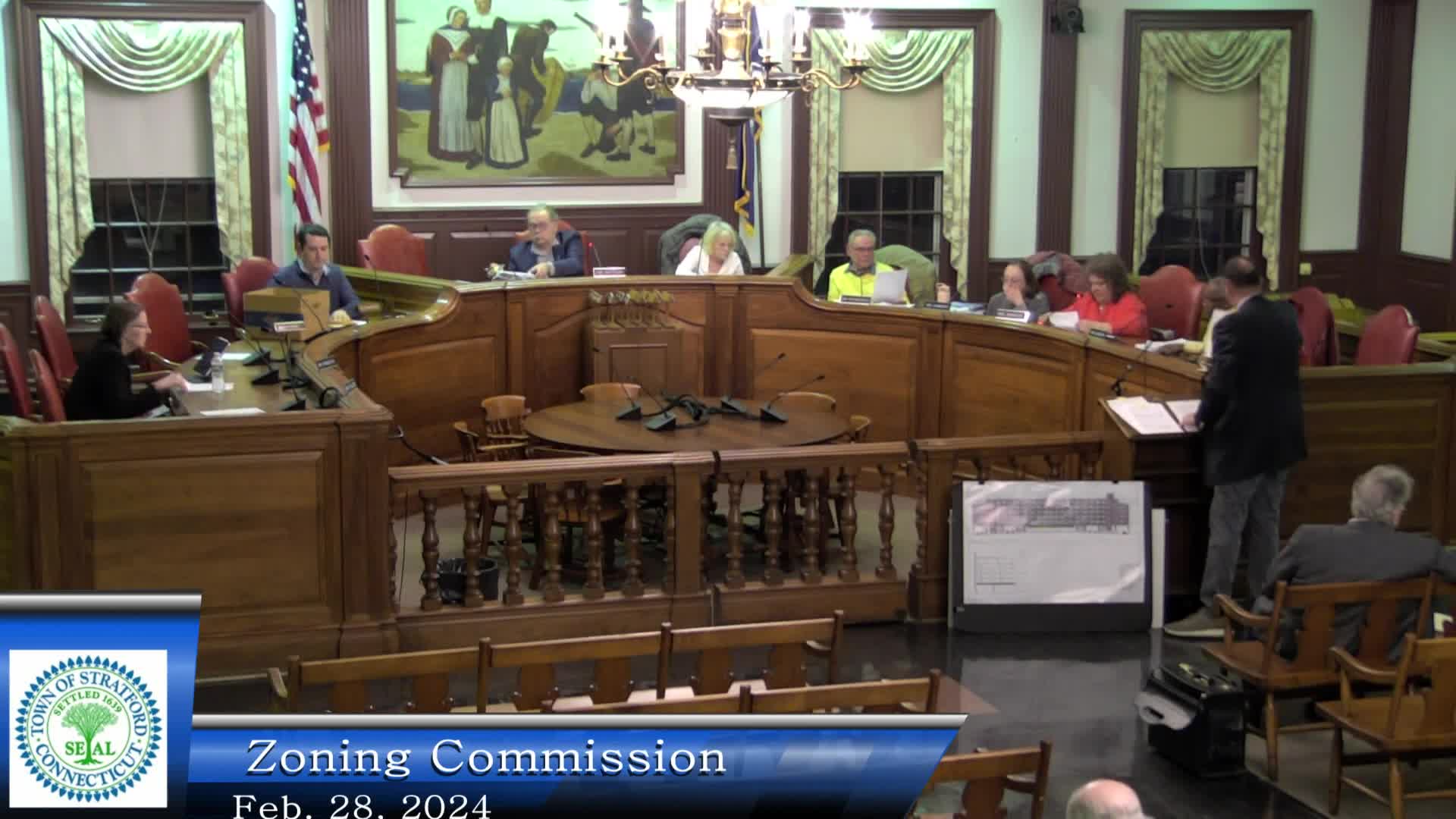Stratford committee reviews 225 Lordship Boulevard affordable housing proposal adjustments
February 29, 2024 | Town of Stratford, Fairfield, Connecticut

This article was created by AI summarizing key points discussed. AI makes mistakes, so for full details and context, please refer to the video of the full meeting. Please report any errors so we can fix them. Report an error »

During a recent Town Council meeting in Stratford, Connecticut, significant discussions centered on a proposal to modify zoning regulations for a residential development at 225 Lordship Boulevard. The proposal, presented by Raymond Rizzio of Russo and Rizzio, seeks to increase the height allowance from 65 feet to 70 feet and the density from 100 to 127 residential units, specifically aimed at enhancing affordable housing options in the area.
The project, which has been under consideration for several years, involves the transformation of a previously blighted hotel into 69 residential units, complemented by a 20,000 square foot self-storage facility. This development has reportedly improved the local tax base and provided a buffer against the adjacent town dump.
Rizzio emphasized the importance of the proposed changes, noting that the additional height and density are crucial for the financial viability of the project, especially in light of rising construction costs and interest rates. He argued that the increase would not adversely affect traffic or the surrounding environment, as the new building would be similar in size to existing structures.
A key point of contention arose regarding the proportion of affordable housing units. The commission had previously suggested that all new units be affordable, a proposal Rizzio deemed financially unfeasible. Instead, he proposed a compromise: maintaining the total unit count at 100 while increasing the percentage of affordable units from 30% to 35 or 36, with all units set at 80% of the Area Median Income (AMI). This adjustment would allow for more affordable housing without increasing the overall density of the project.
The council members expressed appreciation for the revised proposal, recognizing the ongoing need for affordable housing in Stratford. The discussion highlighted the challenges of balancing development incentives with community needs, particularly in the context of state regulations governing affordable housing.
In conclusion, the council's deliberations on the zoning modifications reflect a broader commitment to addressing housing shortages while navigating the complexities of local development regulations. The next steps will involve further evaluation of the proposal, with an emphasis on ensuring that the project aligns with the town's housing goals and community standards.
The project, which has been under consideration for several years, involves the transformation of a previously blighted hotel into 69 residential units, complemented by a 20,000 square foot self-storage facility. This development has reportedly improved the local tax base and provided a buffer against the adjacent town dump.
Rizzio emphasized the importance of the proposed changes, noting that the additional height and density are crucial for the financial viability of the project, especially in light of rising construction costs and interest rates. He argued that the increase would not adversely affect traffic or the surrounding environment, as the new building would be similar in size to existing structures.
A key point of contention arose regarding the proportion of affordable housing units. The commission had previously suggested that all new units be affordable, a proposal Rizzio deemed financially unfeasible. Instead, he proposed a compromise: maintaining the total unit count at 100 while increasing the percentage of affordable units from 30% to 35 or 36, with all units set at 80% of the Area Median Income (AMI). This adjustment would allow for more affordable housing without increasing the overall density of the project.
The council members expressed appreciation for the revised proposal, recognizing the ongoing need for affordable housing in Stratford. The discussion highlighted the challenges of balancing development incentives with community needs, particularly in the context of state regulations governing affordable housing.
In conclusion, the council's deliberations on the zoning modifications reflect a broader commitment to addressing housing shortages while navigating the complexities of local development regulations. The next steps will involve further evaluation of the proposal, with an emphasis on ensuring that the project aligns with the town's housing goals and community standards.
View full meeting
This article is based on a recent meeting—watch the full video and explore the complete transcript for deeper insights into the discussion.
View full meeting
